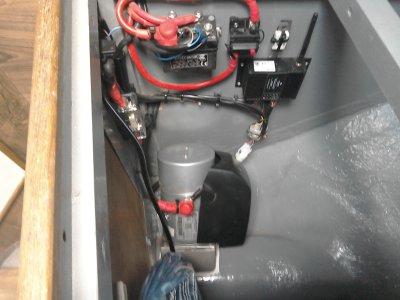William_H
Well-Known Member
I would suggest a simple arrangement would be to connect the thruster/winch battery to the engine battery via decent but not huge cables. A hard parallel connection. Thus if engine is running it will charge up bow battery to that of engine battery. If thruster or winch is operated with engine running the alternator will supplement the bow battery with current dependent on size of cables. If engine is not running start battery will supplement bow battery when under load.
You do not need the isolation of VSR or B2B charger assuming that you will not deplete the engine start battery with thruster or winch with engine not running. In any case you should have provision for emergency starting from domestic battery.
Though actually I would advocate just heavy cables from engine battery and no bow battery. ol'will
You do not need the isolation of VSR or B2B charger assuming that you will not deplete the engine start battery with thruster or winch with engine not running. In any case you should have provision for emergency starting from domestic battery.
Though actually I would advocate just heavy cables from engine battery and no bow battery. ol'will

